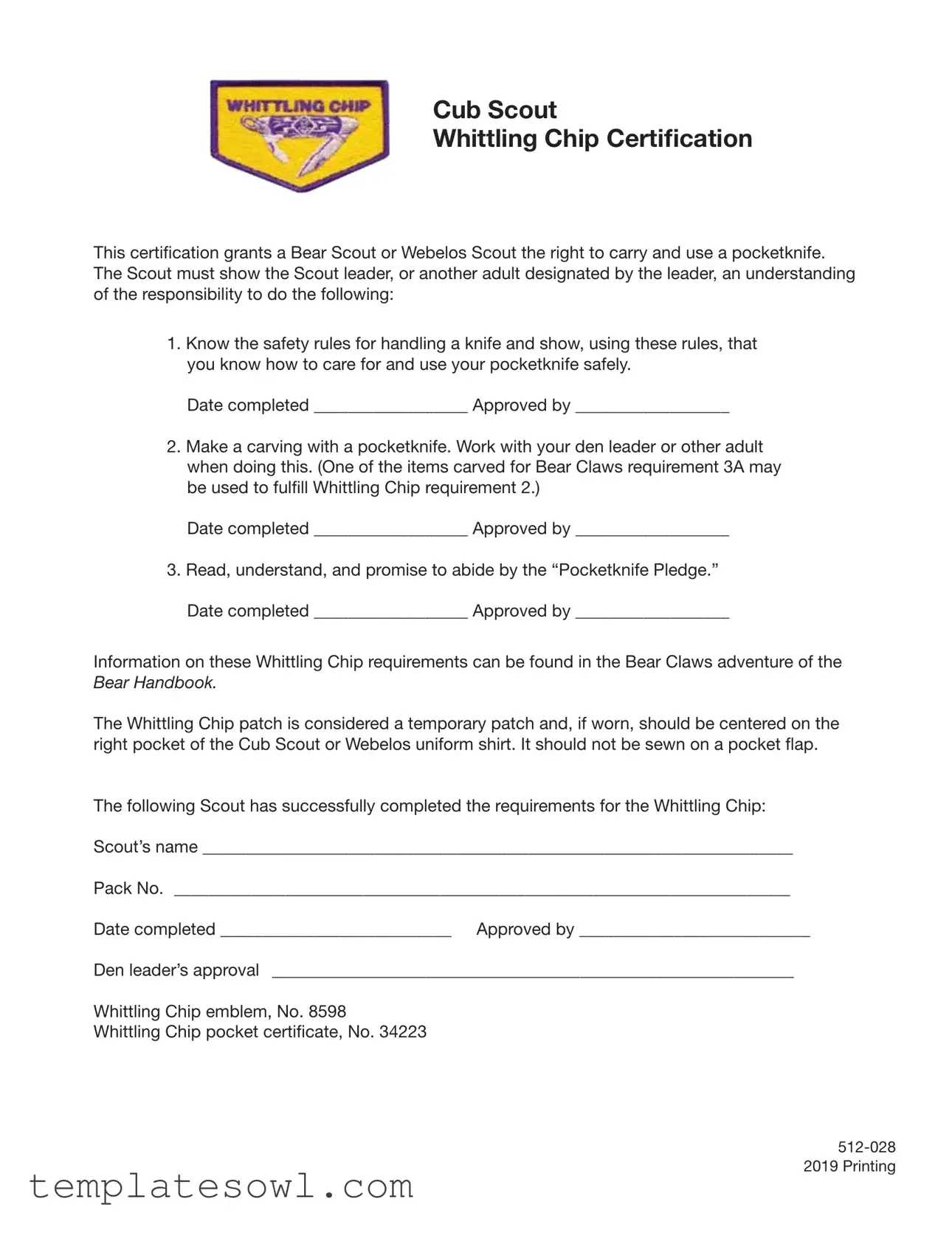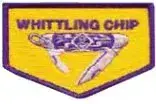When filling out the Whittling Chip Card form, some individuals may overlook important details that can lead to mistakes. One common error occurs when the date completed field is left blank. This date is crucial as it indicates when the scout completed their certification. Without this information, it can create confusion or issues later regarding when the scout is authorized to use their pocketknife.
Another mistake is neglecting to obtain the necessary approvals. Often, individuals forget to have the Scout leader or designated adult sign off on the completed tasks. Each section of the form requires signatures to demonstrate that the scout has received proper guidance and has met the requirements satisfactorily.
Many people also misinterpret the instructions regarding the carving task. Some may attempt to create a carving without working with their den leader or another adult, which is explicitly stated in the requirements. This step is essential to ensuring safety and proper technique when using a pocketknife.
Misunderstanding the "Pocketknife Pledge" can lead to mistakes as well. Some fill out the form without adequately reading or comprehending this important pledge. Promising to abide by the pledge is a vital part of the certification process, and it should not be overlooked.
In addition to the above, individuals may forget to fill in the scout's name and pack number on the form. Both pieces of information are essential for record-keeping and identification. Incomplete forms can lead to confusion, especially in larger packs.
Another common oversight is the placement of the Whittling Chip patch. People may sew the patch on a pocket flap, which goes against the specified guidelines. The patch should be centered on the right pocket of the uniform shirt for it to be displayed correctly.
Some individuals also incorrectly assume that all the sections of the form can be completed independently. In reality, collaboration with adults is often necessary to ensure safety and maturity in knife handling. This oversight can lead to incomplete tasks.
Moreover, forgetting to obtain the den leader's approval is a frequent mistake. This approval is a requirement that reinforces the importance of adult supervision during the learning process. Without this step, the certification could lack validity.
Occasionally, individuals submit the form without double-checking for completeness. Failing to review the entire form can result in missing critical signatures or dates. Taking the time to review the form can prevent unnecessary delays in the certification process.
Lastly, individuals may not keep a copy of the submitted form. Having a copy can be beneficial for future reference, particularly if questions or disputes arise about the scout’s certification. It's always a good practice to maintain a personal record for documentation purposes.

